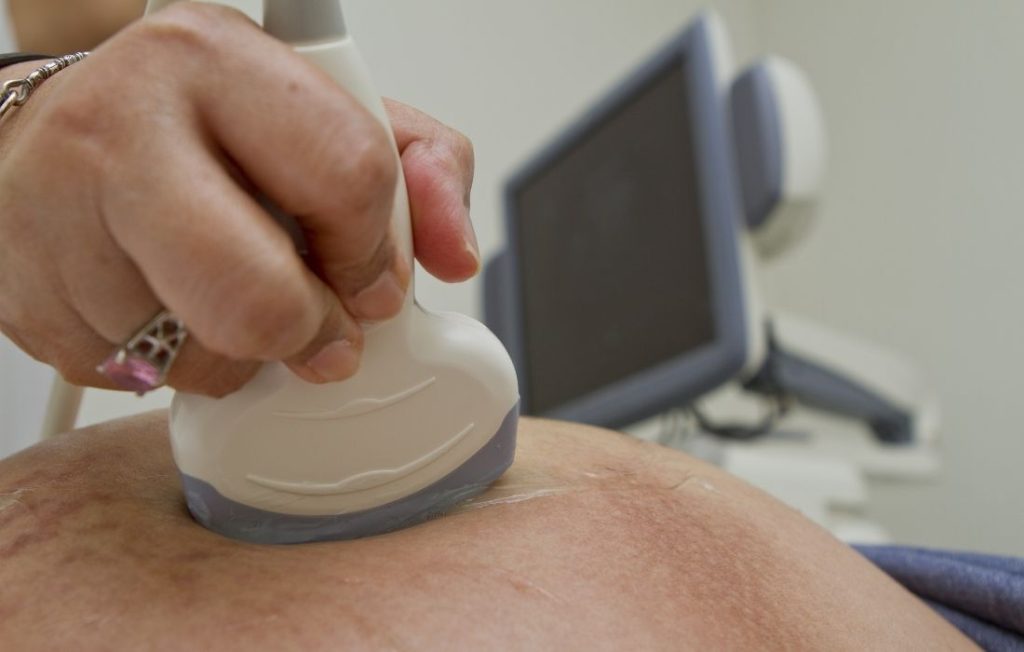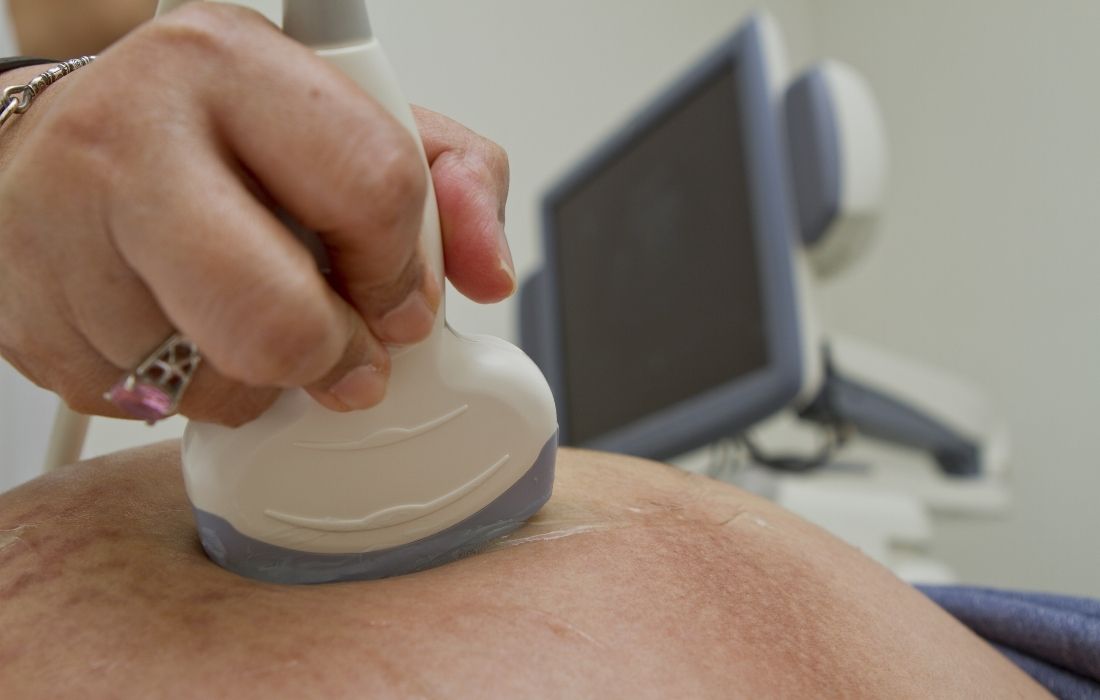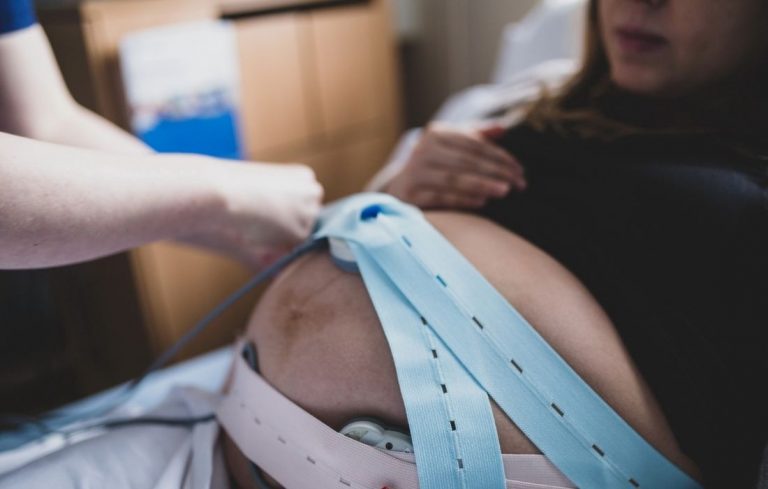Preparing For Pregnancy Ultrasounds When You’re Plus Size
Paulina, an experienced OB-GYN ultrasound technologist, supports patients of all sizes with pregnancy ultrasounds. She answers questions and shares insights to help plus size patients feel informed and empowered when receiving transvaginal and abdominal ultrasounds.

1. How do pregnancy ultrasounds work?
Here’s a pretty basic overview of ultrasound technology.
There’s a different transducer wand used for transvaginal and abdominal pregnancy ultrasounds. It’s like a camera used to view organs or the baby.
The transducer wand sends out sound waves that go through tissue, creating images of whatever we’re trying to see. And ultrasounds are the preferred imaging for pregnancy because ultrasound waves travel well through tissue and fluid. So, the amniotic fluid inside the uterus helps us see the baby.
2. Are ultrasound measurements accurate?
The bigger the baby is, the more room for error. This is because it’s harder to get the accurate landmarks we’re looking for when we do those measurements.
Measurements near the end of pregnancy, which will give us an estimated weight, can be plus or minus up to a pound.
People of all sizes, but especially plus size people, are sometimes told they need to have an induction or cesarean birth due to concerns about the size of their baby. Here’s a helpful evidence-based resource Evidence on: Induction or Cesarean for a Big Baby.
3. Does adipose tissue impact pregnancy ultrasounds?
Adipose (fat) tissue can be difficult for the ultrasound waves to travel through – but not always!
Some people have denser adipose tissue, decreasing the images’ resolution or clarity. Because of this, an ultrasound technologist may press hard on your abdomen when trying to get an image.
Other people have adipose tissue that ultrasound technologists often refer to as “fluffy looking.” Ultrasound waves have no problem traveling through this tissue.
So, there’s no one size fits all answer. But, with that said, the more fatty tissue you have, regardless how dense it is, puts more distance between the transducer and the baby.
Sound waves lose clarity as they travel through the skin, fat, and muscle and go through the uterus to the baby. Then, as the sound waves travel back up to create an image, they continue to attenuate (this means they become less clear).
4. How to prepare for transvaginal ultrasounds?
If the idea of having a transvaginal ultrasound makes you uncomfortable, you can ask if the technologist will first try an abdominal ultrasound. But, please note this is a very common procedure!
You don’t need to do anything special with hygiene before your appointment unless it’s for your comfort level.
For example, there’s no need to get a Brazilian wax before seeing your OB-GYN or an ultrasound technologist. However, you might feel comfortable doing a quick wipe down with a baby wipe before your exam.
To prepare for vaginal pregnancy ultrasounds, you’ll want to empty your bladder.
The ultrasound technologist will tell you how to get settled on the exam table. Then, you’ll want to do your best to relax all of your pelvic muscles. Some people find deep breathing to be helpful.
The transducer wand is long. But don’t worry, only a small part gets inserted into the vaginal canal, much like a tampon but a bit bigger. The wand will get a sterile cover and gel placed on it before insertion for your comfort. You shouldn’t experience any pain.
A transvaginal ultrasound should take about fifteen minutes, and be sure to speak up at any point if you’re experiencing discomfort!
It’s important to note that you do not need to consent to any medical procedures, including a transvaginal ultrasound. And you can always ask for things to stop at any point.
5. How to prepare for abdominal pregnancy ultrasounds?
Abdominal pregnancy ultrasounds are less invasive and happen far more often throughout pregnancy.
How many ultrasounds you’ll have is based on many factors, including whether or not you’re having a high-risk pregnancy.
You’ll want to be well hydrated throughout pregnancy for your overall wellness. Another benefit of staying hydrated is that it helps ultrasound waves to pass through your tissue!
Unlike vaginal ultrasounds where the bladder can get in the way, you’ll want to have a full bladder before having an abdominal ultrasound.
A full bladder is like creating a window right to the cervix where ultrasound technologists can see things better and get good measurements.
Depending on how detailed an exam is needed, first-trimester and third-trimester abdominal ultrasounds take anywhere between 10 – 20 minutes. During this time, the technologist takes basic measurements and gets an estimated fetal weight.
The 20-week anatomy ultrasound lasts between 20 – 45 minutes, depending upon how easily the baby is letting all the anatomy the technologist is trying to evaluate. In some cases, if it’s a much more detailed exam, it could take an hour.
Below we’ll cover other things to know during an abdominal ultrasound.
6. What are tips for having a plus size ultrasound with an apron belly?
An apron belly is a belly flap of excess skin, tissue, and fat that hangs at the bottom of the abdomen. People of all sizes can have an apron belly.
Sometimes an ultrasound technologist will need to get under a person’s apron belly or ask you to change positions for better imaging.
If the technologist asks you to lift your belly, they should do so without making any negative comments about your body. You can also offer to lift your stomach before they even ask!
Having a b-shaped belly or B belly doesn’t impact the exam beyond the ultrasound waves needing to go through any adipose tissue.
7. How hard should an ultrasound technologist press on my belly?
An ultrasound technologist’s job is to get the best imaging and measurements possible so your care provider can assess how your baby is doing.
Each person has a different tolerance for the pressure they can take during pregnancy ultrasounds. This is why communication is critical!
While the technologist might need to press hard for clear images, always speak up if you’re in pain! This is especially the case underneath an apron belly, where the skin can be very delicate.
While some people experience light bruising, you shouldn’t bleed. If you do, definitely tell the technologist and consider mentioning it to your care provider.
Listen to episode 165 of the Plus Mommy Podcast below or via your favorite podcast app to learn even more!
On a final note, many ultrasound technologists and care providers are very compassionate and size-friendly. More often than not, you’ll have a positive experience and leave your appointment with special keepsake images of your baby!
Recording & Show Notes: Plus Mommy Podcast Episode 165
Transcript happily provided upon request.







